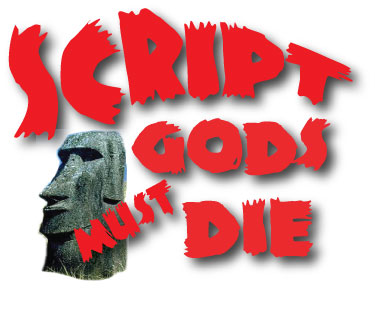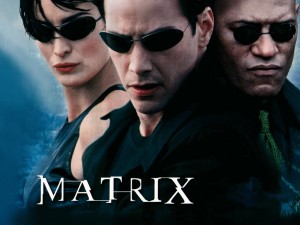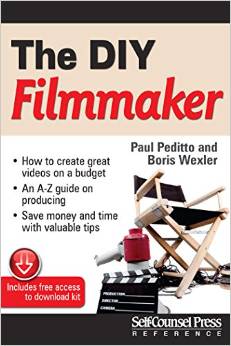So many gurus, so little time…
 Who do you like, Dara Marks or Blake Snyder? Go Old School with Syd Field or Robert McKee? How about looking over the grand-daddy of ’em all, the Hero’s Journey by Joseph Campbell?
Who do you like, Dara Marks or Blake Snyder? Go Old School with Syd Field or Robert McKee? How about looking over the grand-daddy of ’em all, the Hero’s Journey by Joseph Campbell?
What’s wrong with books that help thousands of people conceptualize their writing?
Nothing at all.
So what’s my issue with the writers of screenplay-structure books?
For one, I start scratching when you tell me that EVERY movie fits into the 15 categories of your system. What if I can’t find my “Come To Jesus!” moment? How about if I don’t have a “Protagonist’s Pink Elephant” scene? Guess I’m screwed…
I’m talking about not falling into the trap. What trap? Taking marching orders from gurus who would have you shoe-horn your story into pre-fab structural systems that might have absolutely no bearing on what you’re trying to do. You think Altman worried about his Inciting Incident? Think Cassavettes or Fellini concerned themselves with Plot Points?
These are storytellers first and foremost, and I guess that’s my point: Don’t make structuring your story more important than the story itself.
Judith Malina, founder of the Living Theater (and Grandmama in the Adams Family movie) once told me: “First, I figure out what it is exactly I want to say. Then I say it.” Simple. Why are you writing this story? What is it that resonates with you? You need to know this up front. Then you can worry about how you will tell the tale. I somehow can’t see Judith Malina ever concerning herself with whether her plays fit into perfect 3-Act Structure.
The tale and the telling of the tale—concern yourself with these, you can’t go wrong.
This is not meant as a full-on attack on structure. I told you last week I outline myself, I need my Linus Blanket. And yes, I use an off-shoot of the Syd Field system. Without going into detail (nobody peddles Syd better than Syd) you can see his “Paradigm” method is standard 3-Act structure originated in ancient Greek drama. The movie is broken up into 3 Acts, 3 Acts broken up into 10-15 page Sequences, Sequences broken up into multiple Scenes. First and Third Acts of equal length. Second Act twice as long as First and Third. Thus, say, in a 100 page drama:
ACT 1 = 1-25
ACT 2 = 25- 75
ACT 3 = 75- 100
Lynch pin scenes are Plot Points. These are scenes so important there would be no movie without them. They are also the two scenes that end one act and begin another. Because the Syd Field model is so prevalent, I’ll show one example before we move on. Here’s Plot Point 1 from The Matrix:
The LEATHER CREAKS as he leans back.
MORPHEUS
Unfortunately, no one can be told what the Matrix is. You have to see it for yourself.
Morpheus opens his hands. In the right is a red pill. In the left, a blue pill.
MORPHEUS
This is your last chance. After this, there is no going back. You take the blue pill and the story ends. You wake in your bed and you believe whatever you want to believe.
The pills in his open hands are reflected in the glasses.
MORPHEUS
You take the red pill and you stay in Wonderland and I show you how deep the rabbit hole goes.
Neo feels the smooth skin of the capsules, the moisture growing in his palms.
MORPHEUS
Remember that all I am offering is the truth. Nothing more.
Neo opens his mouth and swallows the red pill. The Cheshire smile returns.
MORPHEUS
Follow me.
Here’s the scene:
Neo has to swallow the red pill! If he swallows the blue pill, there ain’t no movie! He takes the red pill and we’re off to Wonderland. In classic Syd Field structure, Act 1 ends here. Then comes Act 2: The bungee-chord fights, the Oracle, the betrayal by Cypher, and Morpheus taken by the Agents. This leads us to Plot Point 2:
NEO
The Oracle. She told me this would happen. She told me...That I would have to make a choice...
TRINITY
What choice? What are you doing?
NEO
I’m going in after him.
TRINITY
You can’t!
NEO
I have to. Morpheus believed something and he was ready to give his life for what he believed. I understand that now. That’s why I have to go.
TANK
Why?
NEO
Because I believe in something.
TRINITY
What?
NEO
I believe I can bring him back.
Now, what if Neo had said: “You know, Trinity, you’re looking mighty fine in that black latex. Why don’t we just chill, order in some fake Moo Goo Gai Pan, maybe some cyber-Chicken Tikka with paprika? Morpheus will be fine. He’s going to a truer, better place.”
If Neo doesn’t rescue Morpheus, there’s no movie. The whole Act 3 of The Matrix is the Morpheus rescue, one long action sequence, followed by Neo’s realization that he’s “The One”, the vanquishing of Agent Smith, etcetera.
All these structural systems seek to accomplish the same thing: To order chaos. Or, as Mamet defined 3-Act structure: ORDER—CHAOS—RE-ORDER.
When you’re first starting out, you’re at the idea stage. This can be intimidating. It can also be exciting, and an opportunity. From here you can take your story, literally, in any direction. Pitch the idea to an “inner circle” to get feedback. Open yourself up to multiple possibilities. Consider: “If A happens, then…” “If B happens, then…” Note what strikes you—or others—as implausible. See the multiple paths your movie can take, pick the one you want to write, and then write it.
In the idea stage, never censor yourself. There will be plenty of time for criticism. Let the first, rough draft be the one you want to write. Work your scene lists, build continuity. Make sure every scene is necessary to advance character or plot. Plotting Point A to Z, you’ll have the road map in front of you. If you get stuck, you move on to the next scene which is already “written” in outline form.
Some people want a more organic approach. They want surprise. They want the characters to dictate dialogue and action and story. The upside to not outlining is freshness, spontaneity. The downside? What happens when you get to page 62 and your characters suddenly stop speaking to you? This is how writer’s block commences. This is how scripts are abandoned.
This is a process choice. My outlining, occasionally, has taken months. Breaking the full story down. But once done, the script, I find, writes itself very fast. I prefer this approach, if only because it’s what I’ve always done. Call it artistic insecurity, call it a Linus Blanket.
Make your own choice to outline or not. But make it your choice.


